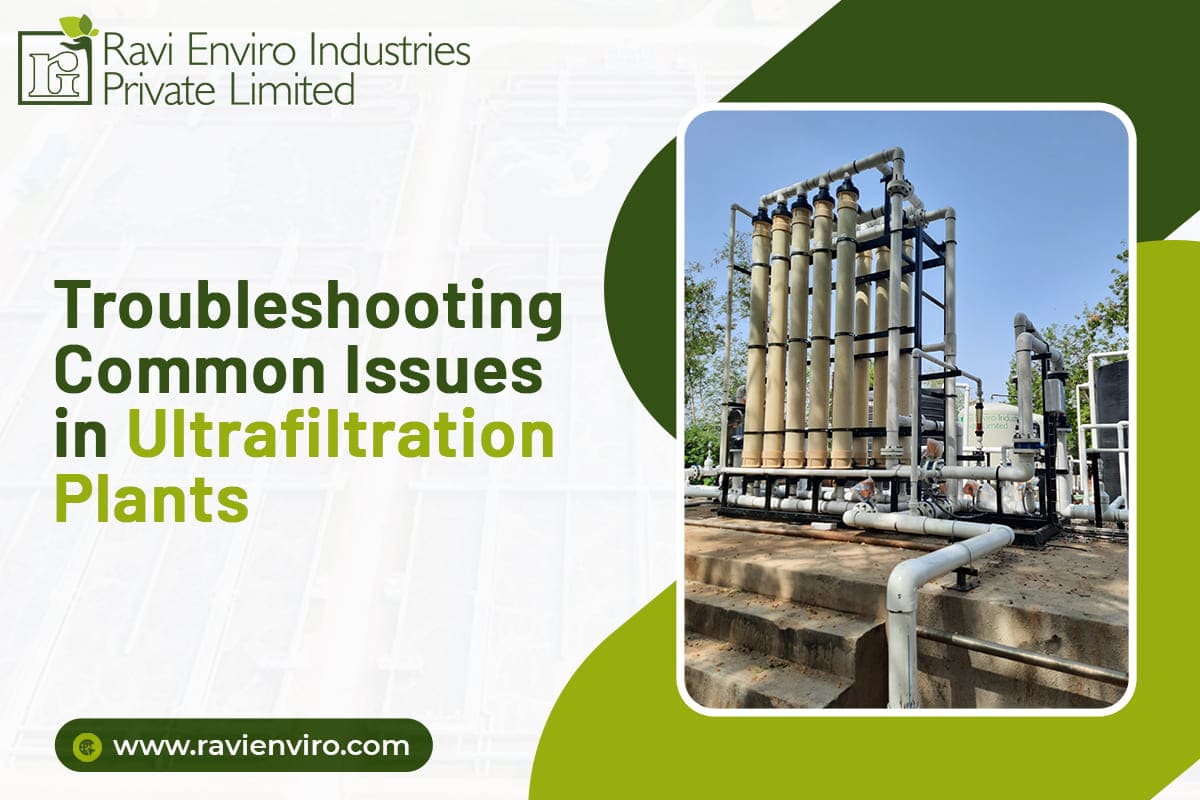
- Feb 18, 2025
- Ravi Enviro
- ultrafiltration (UF)
- 0 Comments
Ultra filtration plants employ pressure-driven membrane separation technology for water treatment. The semipermeable membrane can filter particles as small as 0.01 microns, including slits and viruses. However, the UF plants can face problems without proper care for pretreatment, operation, and maintenance.
Importance of Regular Ultra Filtration Plant Maintenance & Service
Regular ultra filtration plant maintenance is essential to extend its service life, maintain performance, and reduce future expensive maintenance costs. Regular cleaning and maintenance eliminate accumulated dirt and pollutants to maintain membrane permeability and filtration efficiency. Also, choose an ultra filtration plant manufacturer in India that offers comprehensive after-sales service and technical support.
What are the long-term Operation Effects of an Ultra Filtration Plant?
The long-term operation of UF plants can lead to common issues, including membrane fouling, increased energy consumption, flux decline, and other issues. Let’s explore some of the problems that are often encountered.
Troubleshooting Common Issues in Ultra Filtration Plants
- Fouled Membranes
One of the most common problems in ultra filtration plants is fouled membranes. Fouling happens when particulate matter adheres to the surface of the membrane. Some of the foulants are:
Solids: Suspended solids and colloidal particles collect on the UF membrane surface and in the pores, preventing water from passing. This type of fouling is more common in applications with high turbidity and suspended particles that did not get a proper pretreatment.
Scaling: Membrane scaling is when the high-concentration of dissolved minerals is higher than the saturation limit of the solvent solution. They precipitate out of the solution to the surface of the membrane. These minerals crystalize and are challenging to remove without the help of antiscalant treatment or chemicals. The two primary minerals that cause scaling in UF plant membranes are calcium and magnesium.
Microbiological: Contaminants like algae and microorganisms are commonly found on the surface of water sources and thrive in warm environments with low flow rates. These microbes attract themselves to the surface of the membrane. Over a prolonged period of time, they form a film preventing water from passing through the membrane, resulting in a Transmembrane pressure differential, putting pressure on pumps, and increasing energy consumption.
- Waste Stream Disposal
This refers to the discharge of the UF filter concentrate. The rejected concentrate stream consists of whatever was in the feedwater that needs to have something to do with it. The problem is that it can’t be just dumped or disposed of, and if it’s toxic, the facility will be charged a hefty penalty.
Routine Ultra Filtration Plant Maintenance Tips
- Pressure Gauges: Calibrate regularly.
- Centrifugal Pumps: Inspect the pump temperature, noise level, pump gaskets, and other components regularly to prevent pump leakage or other issues.
- Flow Meter: Adjust the meter every 3 months.
- Automatic Valves: Inspect the valve every month & see if there is any leakage in the valve body.
- Feed Water Quality: Check the feed water quality, particularly COD & turbidity.
How REIPL Can Help?
REIPL has over 50 years of experience in custom designing, manufacturing, and maintenance services of industrial water treatment plants. We specialize in ultra filtration water treatment plants for treating diverse industrial wastewater, backed with the latest technology for efficient treatment operation. We also offer exceptional maintenance services and revamping of existing UF plants to optimize facilities and help businesses comply with environmental safety standards. To discuss your UF plant requirements, call us.
Also Check:- Advantages and Disadvantages of Ultrafiltration



